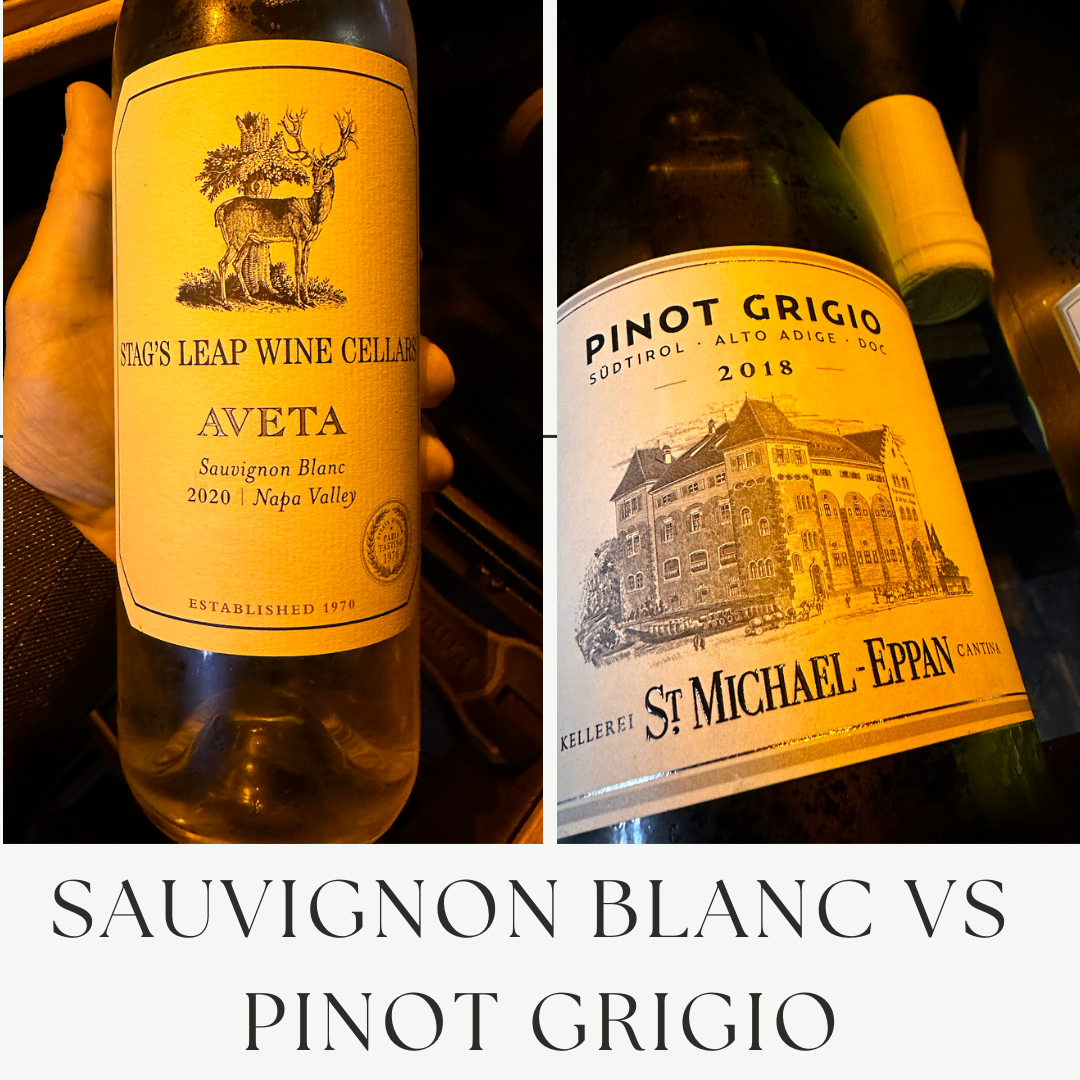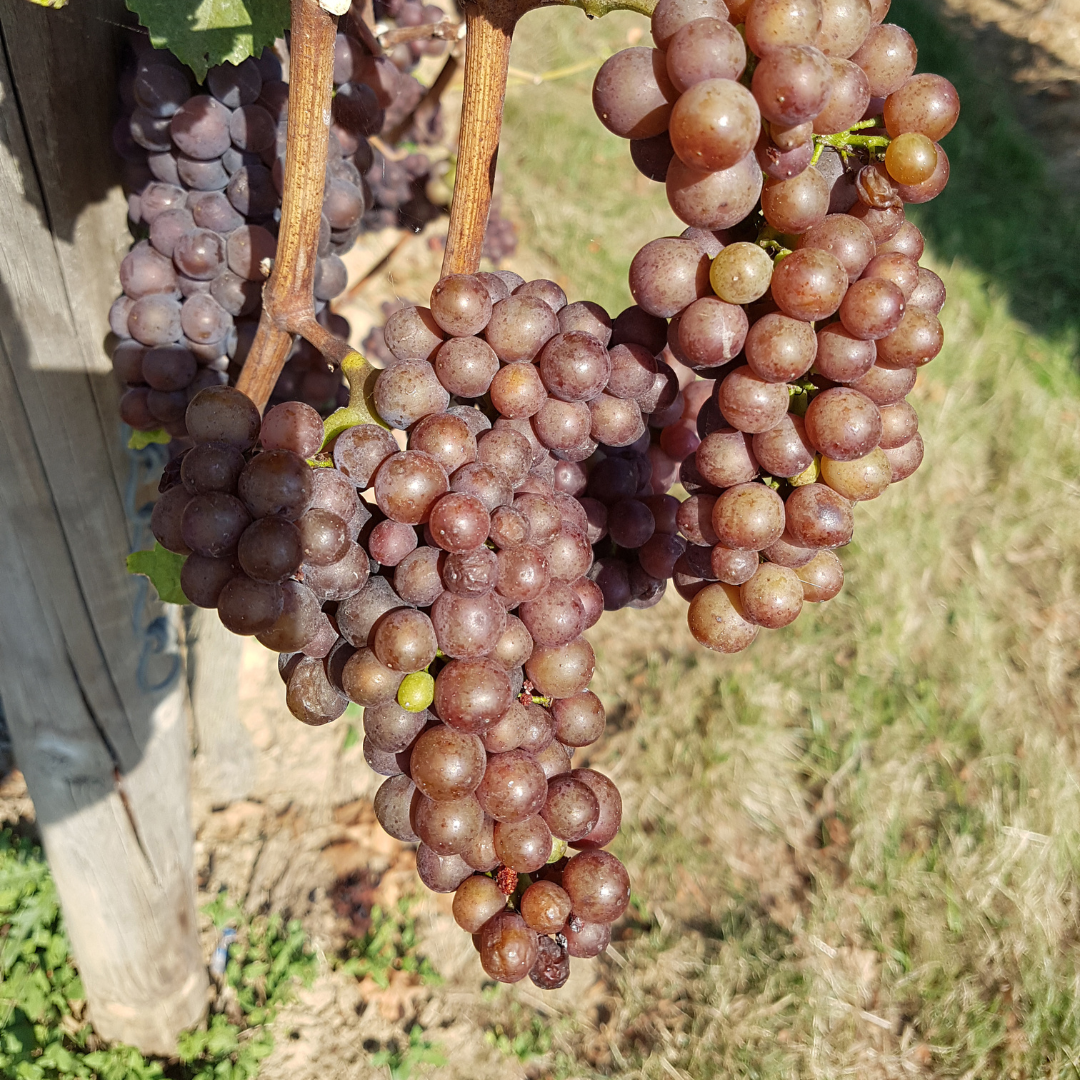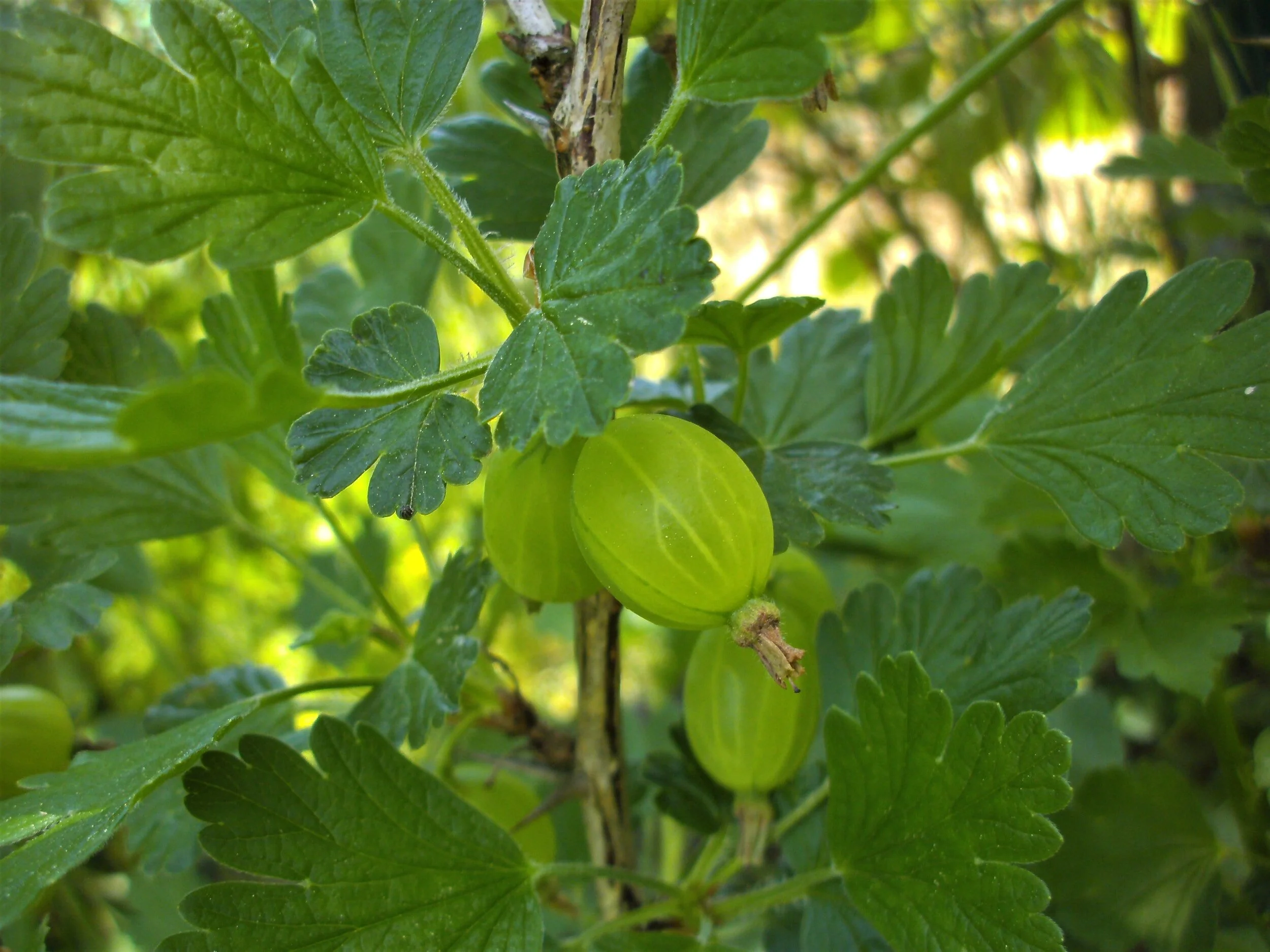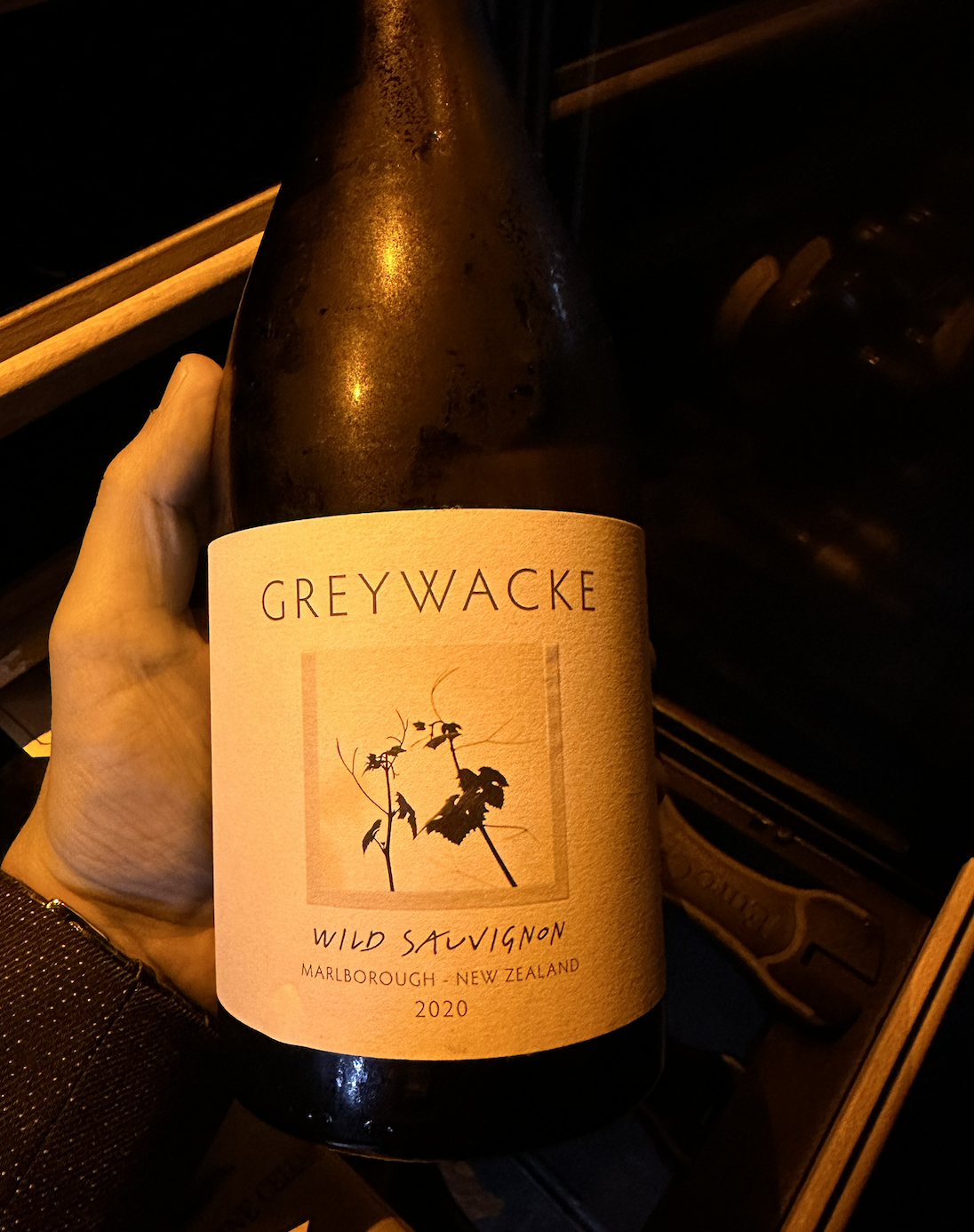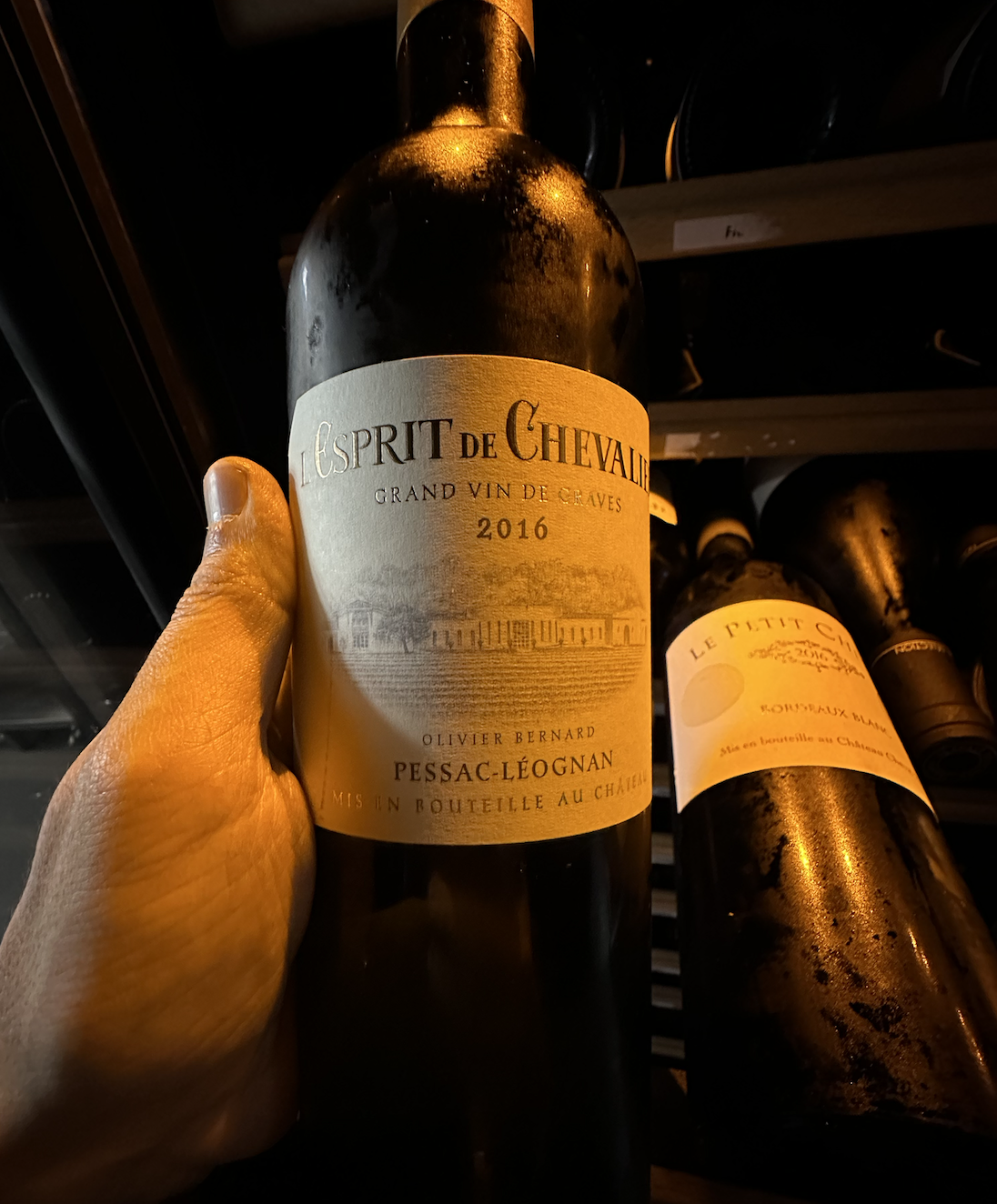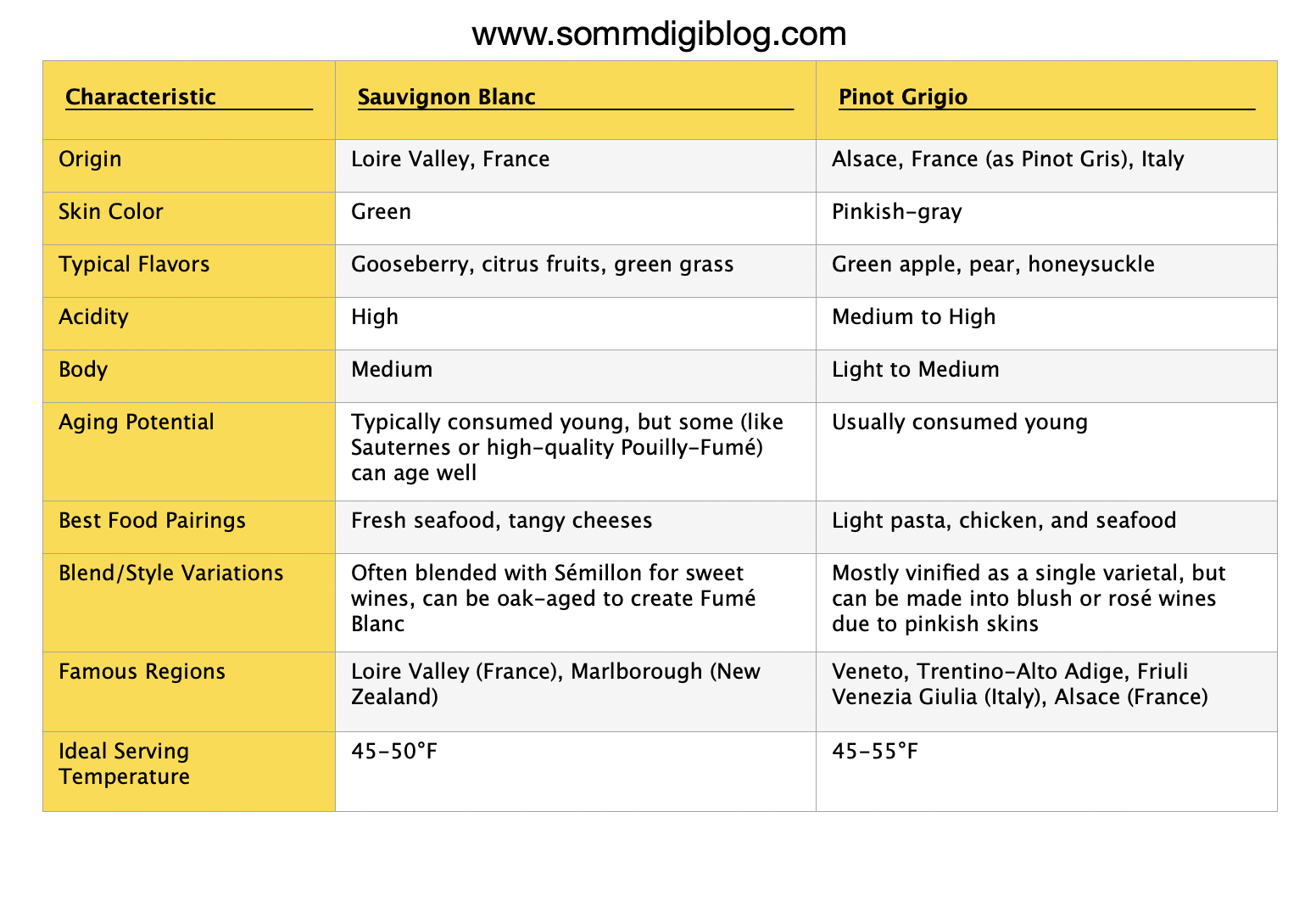Sauvignon Blanc vs. Pinot Grigio: The Differences and Similarities
Are you a wine enthusiast, curious to delve deeper into the world of vino? Or perhaps you're a novice looking to expand your knowledge about some of the most loved white wines? You're in the right place.
Today, we're focusing on two of the most popular white wines globally, Sauvignon Blanc and Pinot Grigio. While both types of wine are exquisite in their own right, they each offer distinct characteristics and flavors.
Let's explore their unique attributes, famous regions, tips for reading their labels, buying recommendations, and best food pairings.
Understanding and Pronouncing the Grapes
Pinot Grigio Grape
Sauvignon Blanc and Pinot Grigio both hail from white grapes. However, Pinot Grigio's skins lean towards a pinkish hue, giving it an edge in producing blush or rosé wines. This is one of the primary distinctions that sets Pinot Grigio apart.
As for pronunciations, say "Sauvignon Blanc" as "so-vee-nyon blahnk" and "Pinot Grigio" as "pee-noh gree-joh". You can confidently name these wines at your next dinner party or while ordering at a restaurant.
Styles of Wines:
Gooseberry aromas Sauvignon Blanc
Sauvignon Blanc is famous for its vibrant, fresh, and zesty characteristics. You can typically expect grassy notes and tropical fruit flavors like gooseberry, passion fruit, and citrus. Its high acidity creates a crisp finish, making it an excellent choice for a refreshing summer drink.
On the other hand, Pinot Grigio is generally lighter and more subtle. Its taste profile often features hints of green apple, pear, and stone fruits. The flavor can range from sweet to dry depending on the region and how it's made, making it incredibly versatile.
Famous Regions:
“Sauvignon Blanc and Pinot Grigio, while globally renowned now, had humble beginnings. The former originated in France’s Loire Valley, while the latter started its journey in France as Pinot Gris and gained popularity in Italy as Pinot Grigio.”
Sauvignon Blanc has made a name in France's Loire Valley and New Zealand. These regions have mastered the art of expressing this grape’s unique attributes, resulting in wines with unmistakable character.
Pinot Grigio, also known as Pinot Gris in France, shines in Italy, especially in Veneto, Trentino-Alto Adige, and Friuli Venezia Giulia. Alsace in France is also known for a richer and more aromatic version of this grape.
France: Sauvignon Blanc from the Loire Valley or Bordeaux, Pinot Gris from Alsace
Sauvignon Blanc from the Loire Valley or Bordeaux is typically made in a dry, crisp style. The grape is harvested early to preserve its acidity, and the wine is fermented in stainless steel tanks at cool temperatures. This style of Sauvignon Blanc is known for its citrusy, grassy, and herbaceous flavors.
New Zealand: Sauvignon Blanc from Marlborough
Sauvignon Blanc from Marlborough is typically made in a more fruity and aromatic style. The grape is harvested early to preserve its acidity, and the wine is fermented in stainless steel tanks at cool temperatures. This style of Sauvignon Blanc is known for its citrusy, grassy, and herbaceous flavors.
Italy: Pinot Grigio from Trentino-Alto Adige or Friuli-Venezia Giulia
Pinot Grigio from Trentino-Alto Adige or Friuli-Venezia Giulia is typically made in a light, refreshing style. The wine is fermented in stainless steel tanks at cool temperatures. This style of Pinot Grigio is known for its citrusy and floral flavors.
Have you ever tried Sauvignon Blanc or Pinot Grigio? What did you think of them? Let us know in the comments below!
Winemaking: Exploring Blends and Styles
Regarding winemaking, Sauvignon Blanc and Pinot Grigio are made similarly. Both wines are typically fermented in stainless steel tanks at cool temperatures. However, Sauvignon Blanc grapes are generally harvested earlier than those for Pinot Grigio, which helps preserve the grape's acidity.
Bordeaux style Sauvignon Blanc
While delicious, Sauvignon Blanc is often blended with other grape varieties to create unique wine styles. For instance, it's frequently combined with Sémillon to craft delightful sweet wines like the world-renowned Sauternes from Bordeaux. Furthermore, when Sauvignon Blanc is aged in oak, it can lead to a style called 'Fumé Blanc,' especially prominent in the Pouilly-Fumé and some California wines. This aging process imparts a smoky richness to the wine, softening its vibrant acidity and adding an intriguing layer of complexity.
Contrastingly, Pinot Grigio is usually vinified as a single varietal wine, showcasing its delicate fruit and floral characteristics. However, its pink-hued skins offer additional versatility, allowing winemakers to create beautiful blush and rosé wines. By briefly leaving the juice in contact with the skins, winemakers can extract a light pink color, offering a fruitier and slightly tannic alternative to the typical Pinot Grigio style.
In understanding the blending and stylistic versatility of Sauvignon Blanc and Pinot Grigio, you can further appreciate the incredible art and science of winemaking, making your next sip all the more enjoyable.
Reading Wine Bottle Labels:
When buying these wines, pay close attention to the label. Look for the production region, which greatly influences the wine's style. Opt for a bottle from Sancerre in France or Marlborough in New Zealand for a more intense, mineral-driven Sauvignon Blanc. A Pinot Grigio from Veneto or Friuli Venezia Giulia in Italy will likely be your best bet if you prefer a lighter, fruitier style.
Buying Tips and Ordering in Restaurants
Consider the occasion and food choices when buying or ordering Sauvignon Blanc or Pinot Grigio. Both wines have good acidity, making them excellent pairings with various dishes. Always ask for recommendations if unsure; a good wine shop or restaurant will gladly help you choose the perfect bottle.
Food Pairings
Sauvignon Blanc's zesty nature makes it a beautiful companion to fresh seafood, particularly oysters, scallops, or even tangy goat cheese. Its high acidity can cut through the richness of these foods, creating a balanced dining experience.
In contrast, Pinot Grigio's subtle, gentle flavors pair well with light pasta dishes, chicken, and a variety of seafood, such as shrimp or clam. Its versatility also makes it a great match for slightly spicy foods.
SAUVIGNON BLANC VS PINOT GRIGIO COMPARISON CHART
Whether you're a fan of the crisp, refreshing notes of a Sauvignon Blanc or a Pinot Grigio's lighter, subtle taste, understanding these wines can greatly enhance your drinking experience. Remember, a world of wine is waiting to be discovered, so keep experimenting with different styles, regions, and pairings to find your perfect match.
Cheers!
More information about Sauvignon Blanc and Pinot Grigio

